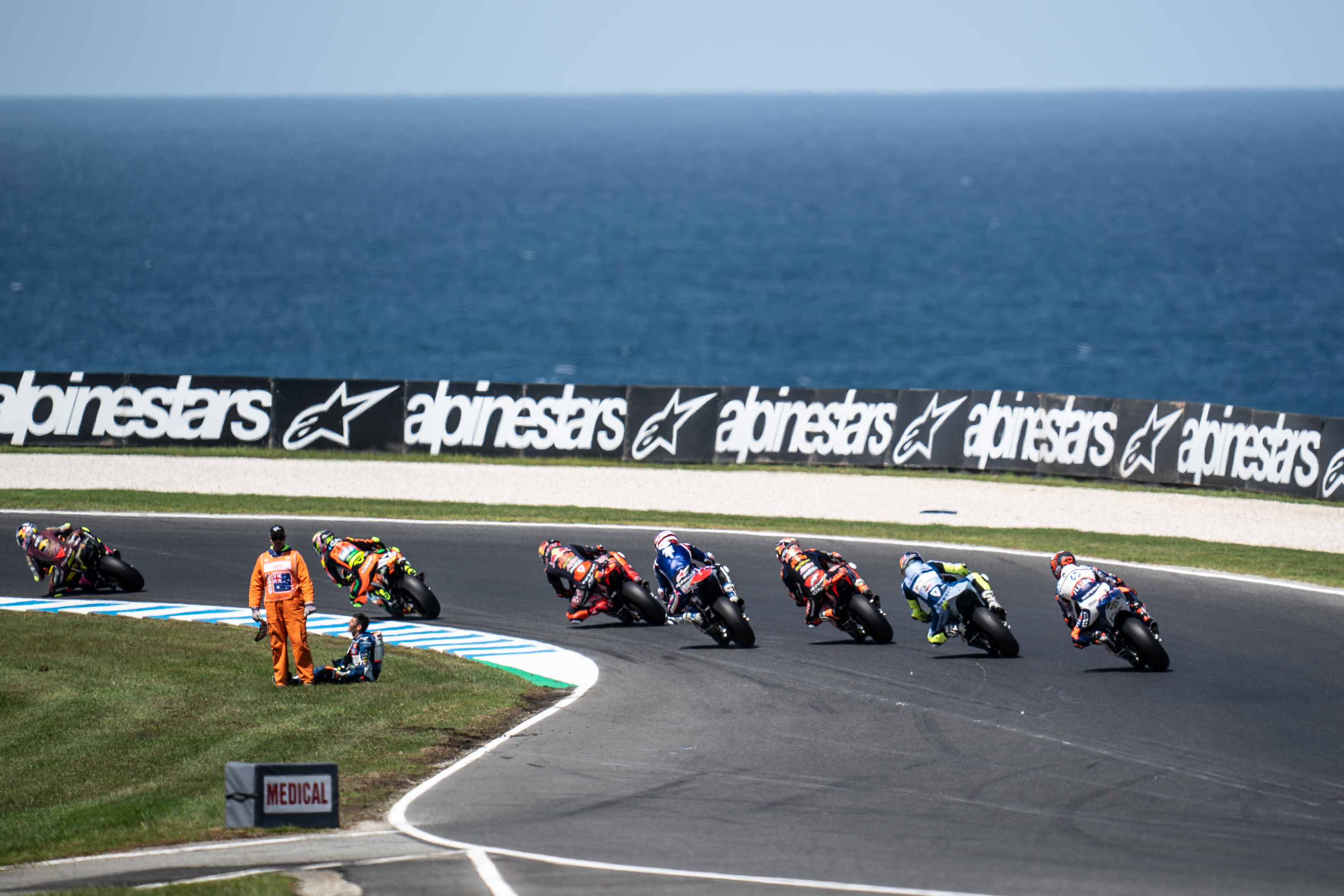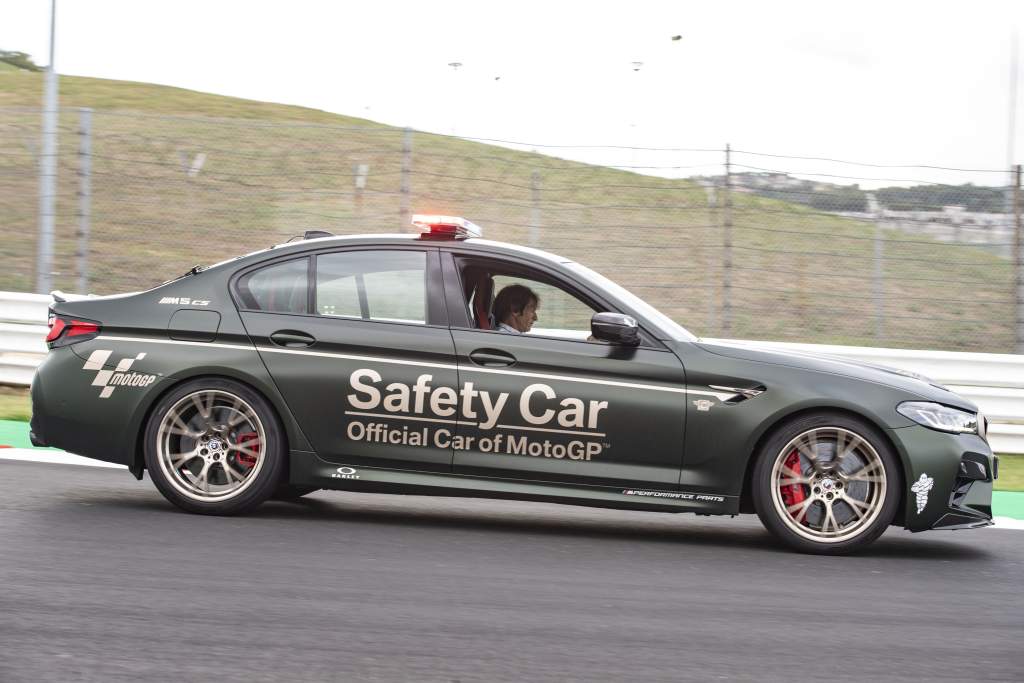With MotoGP bosses coming under increasing flak of late for its seeming unwillingness to red flag races, one potential solution that has been mooted is the introduction of an F1-style safety car.
This would allow races to be briefly suspended without a complete stoppage, in order to address incidents such as injured riders in close proximity to other competitors or marshals requiring a clear track to remove crashed machines.
And, while that’s something that has traditionally been seen as impossible thanks to the characteristics of Michelin’s control tyres in the premier class, the head of the French firm’s motorcycle racing division Piero Taramasso has revealed exclusively to The Race that he believes it could be in a position to support such a move within as little as one season – with no drop in performance.
The issue of race stoppages has been thrust into the forefront in recent weeks thanks in large part to a high-profile incident during the Moto2 race at the Australian Grand Prix that saw Pons Racing rider Jorge Navarro stranded only a metre from a live track with a broken femur and severed femoral artery.

It’s an issue made worse by the the series’ somewhat loose yellow flag rules, under which only a crash under yellow flags merits a hefty punishment. Ignoring a waved yellow danger signal in practice or qualifying simply docks your laptime, while overtaking under yellow in a race only results in being forced to give back the place.
And while a safety car is unlikely to be an adequate solution for practice or qualifying incidents (something that was also an issue at Phillip Island thanks to repeated track invasions from the local wallaby and goose populations), moving to that model is something that would produce a significant benefit in racing while also both protecting the all-important TV schedule and providing closer racing by bunching up spread-out fields.
It would also both require no additional equipment and provide an additional commercial opportunity for long-time MotoGP partner BMW, which already supplies a large range of M Sport performance vehicles for every MotoGP round – with the cars only currently being used for following the sighting and warm-up laps, for assessing track conditions and as emergency response medical vehicles.

The safety car format is also used elsewhere in bike racing to great success, too, with an existing model already in place in both the Endurance World Championship and the British Superbike Championship.
“BSB has successfully utilised a safety car for live interventions since 1999,” series director Stuart Higgs told The Race. “Since then, it has been used on countless occasions and is a valuable tool.
“It provides neutralised control for marshals to respond to incidents, react to potential contamination, and even allow medical evacuations of a non-serious nature to take place without the need for a red flag, which in turn negates having the most dangerous part of the race [again] which is the start and opening few corners.”
However, with superbike series running on very different production-derived slick tyres (something that Michelin has experience with thanks to its long history in endurance racing) compared to MotoGP, the rubber’s performance has always been seen as the biggest hindrance to introducing a safety car to prototype racing.
“This model of tyre is not designed for when you have a safety car,” Michelin boss Taramasso admitted at the Malaysian Grand Prix earlier this month, “and the temperature and pressure would drop and you would never be able to bring it back again.
“We see this regularly when some riders go off the track and then when they come back the tyre has dropped and they struggle. We would need to redesign the tyres, and at the moment it would not be possible.”

But, it’s also something that could very easily be reversed, according to the veteran engineer – and, in even better news, he believes it would come without even a drop in performance or laptime given Michelin’s experience.
“It’s something that we do for endurance tyres, for the 24-hour races,” he explained. “Sometimes they have safety cars and that kind of tyre is designed for it, is able to do it – but not the MotoGP tyre.
“I think it would take one season. The time to design, to build and to test; we would be able to react in one year’s time.
“It wouldn’t necessarily mean a drop in performance: we can probably keep the same, but we would have to do some testing. But in theory it is possible.”




